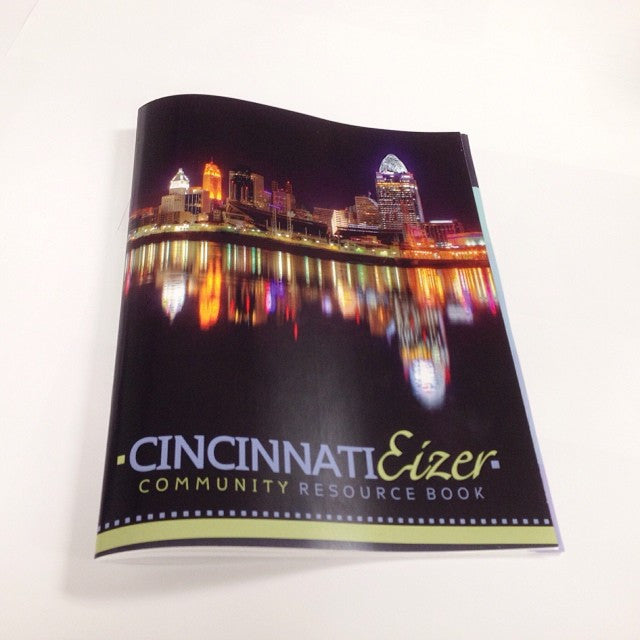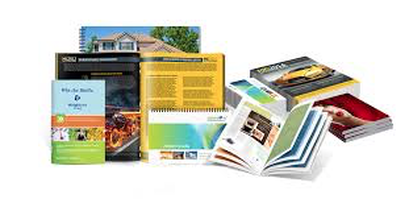The Important Overview to Recognizing Pamphlet Printing Options and Techniques
The procedure of booklet printing includes several factors to consider that can greatly impact the final item. From picking the proper layout and size to understanding the nuances of binding methods, each selection plays an essential function. Furthermore, variables such as paper supply and printing methods further affect the effectiveness of the pamphlet. As one navigates these options, it ends up being vital to comprehend how they adjoin and what that implies for the general end result.
Comprehending Booklet Sizes and styles
When considering brochure printing, recognizing the various formats and dimensions available is essential for attaining the wanted discussion. Pamphlets can be produced in countless layouts, consisting of saddle-stitched, spiral-bound, and perfect-bound, each offering distinctive benefits. Usual sizes vary from standard letter (8.5 x 11 inches) to smaller alternatives like A5 (5.8 x 8.3 inches), enabling versatility based upon web content and target audience.Selecting the suitable size can affect both the design and viewers involvement. Bigger dimensions might match visually driven web content, while smaller sized layouts might be much more mobile and straightforward. Additionally, the variety of web pages affects the selection of binding method, as thicker pamphlets may require sturdier bindings. Inevitably, understanding these elements enables a much more tailored technique, guaranteeing that the end product aligns with the designated message and visual, enhancing the overall performance of the communication.
Selecting the Right Paper Stock

Binding Approaches: Factors To Consider and choices
When it involves binding methods for brochures, several alternatives are available, each with distinct advantages. Saddle stitch binding offers a cost-effective solution for thinner booklets, while excellent binding strategies provide an even more polished look for thicker magazines. Wire-O binding stands apart for its longevity and convenience of use, making it optimal for files that need adaptability.
Saddle Stitch Binding
Saddle stitch binding offers a sensible and economical solution for setting up booklets, making it a preferred option amongst publishers and services. This binding approach entails folding sheets of paper in fifty percent and stapling them along the fold line, developing a neat and orderly look. Normally ideal for booklets with a reduced web page matter, saddle sewing is ideal for publications, brochures, and instructional materials. The simpleness of this strategy enables fast manufacturing and is usually preferred for promotional products or short runs. It is vital to note that saddle stitch binding may not be ideal for thicker booklets, as the spine may not hold up under enhanced weight. Overall, it stays a dependable option for numerous printing projects.
Perfect Binding Strategies
Perfect binding is an extensively made use of strategy that offers a polished and professional surface to pamphlets and magazines. This approach includes gluing the pages with each other at the back making use of a strong adhesive, permitting a tidy edge and the ability to hold a larger number of web pages contrasted to saddle stitching. Perfect binding is particularly suitable for thicker booklets, such as directories and yearly reports, where a strong, flat spinal column is wanted. In addition, it supplies the option for a printed cover that can be developed to boost visual charm. Considerations such as page matter, paper weight, and the intended usage of the booklet need to be taken into account, as they can influence durability and general quality.
Wire-O Binding Choices
Wire-O binding, recognized for its resilience and flexibility, offers an outstanding alternative for booklets that call for very easy page transforming and a specialist look. This binding method utilizes a series of metal loopholes that hold pages firmly, allowing them to lie level when open. It is specifically suitable for manuals, discussions, and catalogs as a result of its durable nature. Wire-O binding is available in numerous shades and sizes, fitting different page counts and thicknesses. Furthermore, it permits the incorporation of covers and tabs, enhancing the booklet's general aesthetic. Factors to consider for Wire-O binding include the option of cord shade, the dimension of the loopholes, and the extent of modification desired, every one of which can greatly influence the final product's appearance and capability.
Digital vs. Offset Printing: Which Is Best for You?
When choosing a printing method for booklets, understanding the distinctions between electronic and offset printing is vital. Digital printing utilizes contemporary technology to produce top notch prints swiftly and cost effectively, making it ideal for short runs or tasks requiring quick turnaround times. It enables personalization, providing the ability to publish on-demand with very little waste.In contrast, offset printing is a traditional technique that masters generating huge amounts with regular high quality. It includes moving ink from a plate to a rubber blanket, after that to the paper, which leads to specific blog details and lively colors. However, counter printing typically needs longer configuration times and is more economical for larger volumes.Ultimately, the choice between electronic and counter printing depends upon project requirements, budget plan, and preferred amount. For tiny, time-sensitive tasks, electronic could be the most effective option, while offset might be more suitable for bigger, top notch manufacturings.

Creating Your Booklet: Tips and Best Practices
When making a pamphlet, cautious interest to layout, typeface selection, and color use can greatly improve its performance. A well-structured layout overviews the reader's eye, while proper fonts assure readability and share the wanted tone. Additionally, effective use color can evoke feelings and highlight essential details, making the total style a lot more impactful.
Choosing the Right Format
Exactly how can one effectively pick the appropriate layout for a booklet? Initially, it is vital to evaluate the booklet's purpose and target audience. A tidy, arranged format improves readability and interaction. Using a grid system can aid in straightening components continually, developing a professional look. In addition, integrating aesthetic hierarchy through differing you can try here dimensions and placements of pictures and text can lead the viewers's eye and stress vital details. It is additionally essential to leave enough white room, which avoids overcrowding and enables far better emphasis. Finally, testing various designs with mock-ups can give understanding right into how the design executes in real-world circumstances, guaranteeing that the final item satisfies both functional and visual demands.
Selecting Appropriate Fonts
A well-chosen typeface can significantly boost the overall layout of a brochure, complementing the format and strengthening the web content's message. The option of typefaces must take into consideration readability, particularly for body message, as it ensures the details is obtainable to all viewers. Sans-serif typefaces are usually preferred for electronic styles, while serif fonts can lend a traditional feeling in printed products. It's recommended to limit font options to 2 or 3 to preserve aesthetic coherence. Furthermore, font style dimension plays an important function; headings must be distinct yet not overwhelming, while body text need to fit for analysis. When choosing fonts, positioning with the brochure's theme and target audience is essential for efficient communication and visual allure.
Effective Use of Shade
Shade functions as a powerful tool in booklet design, leading and shaping perceptions reader emotions. It can evoke sensations of calmness, exhilaration, or depend on, depending on the hues picked. Designers need to think about color concept principles, making sure that the picked combination straightens with the pamphlet's message and target market. Using cozy shades like red and orange can develop urgency, while cooler tones like green and blue foster tranquility.Additionally, contrast plays an important duty; corresponding colors can improve readability and visual charm. Consistency in shade usage throughout pages better enhances brand name identity and cohesion. Inevitably, effective shade application not only catches interest however likewise enhances the booklet's objective, making it a crucial aspect of effective design.
Ending Up Touches: Coatings and Special Impacts
While numerous consider the content and format of a booklet the most important aspects, the ending up touches, such as coverings and special effects, play an important duty in boosting its general appeal. Coatings can offer protection and toughness, ensuring that the booklet withstands deterioration. Matte finishes use an innovative, non-reflective surface, while glossy coverings can make colors appear more captivating and vibrant. Special effects, like embossing or aluminum foil stamping, include a tactile measurement that can produce a memorable impression. These methods can visit site highlight certain areas, drawing interest to crucial information or developing aesthetic rate of interest. Additionally, UV finishing can offer a high-shine finish that boosts the total look.Together, these finishing touches not just enhance the booklet's visual however likewise communicate professionalism and reliability and attention to detail, inevitably leaving a long lasting effect on the visitor.
Price Factors To Consider for Booklet Printing
Understanding the different expense factors to consider for brochure printing is essential for companies and organizations intending to maximize their budgets. Key aspects influencing prices consist of the choice of paper, binding, and ink methods. Higher quality products, such as premium paper or specialized inks, normally enhance the general expense. In addition, the dimension and web page matter of the pamphlet play a substantial function; larger pamphlets need more sources and time to produce.Another crucial consideration is the printing method, whether electronic or offset, as each has its very own pricing structure and suitability for different amounts. Companies must also factor in design costs, which can vary based on intricacy and the usage of specialist solutions. Eventually, shipping and handling costs can include to the total amount, especially for huge orders. By examining these elements, organizations can make informed decisions that line up with their financial abilities while achieving the desired quality in their published materials.
Often Asked Questions
What Are the Ecological Effects of Pamphlet Printing?
The ecological influences of booklet printing include deforestation from paper production, carbon emissions from transport, and waste generation from discarded materials - Booklet Printing. Sustainable methods, such as using recycled paper and green inks, can alleviate these effects
Just How Can I Make Sure Color Precision in My Pamphlet?
To guarantee color precision in a pamphlet, one ought to utilize calibrated monitors, utilize expert shade profiles, conduct examination prints, and pick top notch printing solutions that supply color matching and proofing options for ideal results.
What Is the Typical Turnaround Time for Brochure Printing?
The normal turnaround time for booklet printing varies relying on the intricacy and amount - Booklet Printing. Normally, it varies from a few days to 2 weeks, affected by aspects such as publishing techniques and completing requirements
Exist Minimum Order Quantities for Pamphlet Printing?

Can I Print Pamphlets in Numerous Languages?
Publishing brochures in multiple languages is possible. Many printing solutions use options for multilingual or multilingual designs, allowing for efficient communication. Careful preparation warranties that design elements accommodate numerous languages without jeopardizing readability or visual appeals. In addition, factors such as paper stock and printing strategies additional affect the effectiveness of the booklet. When considering brochure printing, understanding the different formats and dimensions offered is important for achieving the preferred presentation. When picking a printing approach for pamphlets, recognizing the distinctions in between electronic and counter printing is important. Additionally, the size and web page count of the brochure play a considerable duty; larger booklets require even more resources and time to produce.Another essential consideration is the printing technique, whether digital or countered, as each has its very own prices structure and viability for different amounts. The ecological effects of booklet printing consist of logging from paper production, carbon discharges from transport, and waste generation from disposed of products.